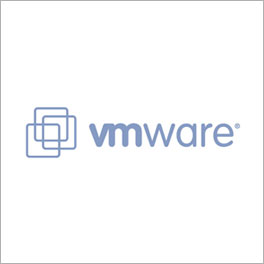VMware vSphere: Install, Configure, Manage (5.1/5.5)

Course Overview
This hands-on training course explores installation, configuration, and management of VMware vSphere®, which consists of VMware vSphere® ESXi™ and VMware® vCenter Server™. This course is based on prerelease versions of ESXi 5.1 and vCenter Server 5.1.
Completion of this course satisfies the prerequisite for taking the VMware Certified Professional 5 exam.
Course Objectives
By the end of the course, you should understand vSphere 5.1 functions and features and be able to do the following:
- Install and configure ESXi
- Install and configure vCenter Server components
- Use vCenter Server to configure and manage ESXi networking and storage
- Deploy, manage, and migrate virtual machines
- Manage user access to the VMware infrastructure
- Use vCenter Server to monitor resource usage
- Use vCenter Server to increase scalability
- Use VMware vSphere® Update Manager™ to apply ESXi patches
- Use vCenter Server to manage higher availability and data protection
Prerequisite
- System Administration experience on Microsoft Windows or Linux Operating Systems
Course Duration
- 5 days of instructor-led training
- 60% lecture and 40% hands-on lab
Target Audience
- System Administrators
- Systems Engineers
- Operators responsible for ESXi and vCenter Server
Course Modules
- Course Introduction
- – Introductions and course logistics
- Introduction to VMware Virtualization
- – Introduce virtualization, virtual machines, and vSphere components
- – Explain the concepts of server, network, and storage virtualization
- – Describe where vSphere fits into the cloud architecture
- – Install and use vSphere user interfaces
- Creating Virtual Machines
- – Introduce virtual machines, virtual machine hardware, and virtual machine files
- – Deploy a single virtual machine
- VMware vCenter Server
- – Introduce the vCenter Server architecture
- – Introduce VMware® vCenter™ Server Appliance™
- – Configure and manage vCenter Server Appliance
- – Manage vCenter Server inventory objects and licenses
- Configuring and Managing Virtual Networks
- – Describe, create, and manage a standard virtual switch
- – Describe and modify standard virtual switch properties
- – Configure virtual switch load-balancing algorithms
- Configuring and Managing Virtual Storage
- – Introduce storage protocols and device names
- – Configure ESXi with iSCSI, NFS, and Fibre Channel storage
- – Create and manage vSphere datastores
- – Deploy and manage VMware vSphere® Storage Appliance
- Virtual Machine Management
- Use templates and cloning to deploy virtual machines
- Modify and manage virtual machines
- Create and manage virtual machine snapshots
- Perform VMware vSphere® vMotion® and VMware vSphere® Storage vMotion® migrations
- Create a VMware vSphere® vApp™
- Data Protection
- – Discuss a strategy for backing up ESXi hosts and vCenter Server
- – Discuss solutions for backing up virtual machines efficiently
- Access and Authentication Control
- – Control user access through roles and permissions
- – Configure and manage the ESXi firewall
- – Configure ESXi lockdown mode
- – Integrate ESXi with Active Directory
- – Explain VMware® vShield Endpoint™ integration in VSphere
- Resource Management and Monitoring
- – Introduce virtual CPU and memory concepts
- – Describe methods for optimizing CPU and memory usage
- – Configure and manage resource pools
- – Monitor resource usage using vCenter Server performance graphs and alarms
- High Availability and Fault Tolerance
- – Introduce the new VMware vSphere® High Availability architecture
- – Configure and manage a vSphere HA cluster
- – Introduce VMware vSphere® Fault Tolerance
- – Describe VMware vSphere® Replication
- Scalability
- – Configure and manage a VMware vSphere® Distributed Resource Scheduler™ (DRS) cluster
- – Configure Enhanced vMotion Compatibility
- – Use vSphere HA and DRS together
- Patch Management
- – Use Update Manager to manage ESXi patching
- – Install Update Manager and the Update Manager plug-in
- – Create patch baselines
- – Scan and remediate hosts
- Installing VMware Components
- – Introduce ESXi installation
- – Describe boot-from-SAN requirements
- – Introduce vCenter Server deployment options
- – Describe vCenter Server hardware, software, and database requirements
- – Install vCenter Server (Windows-based)
